Editing
Types
What is a shot ?
The term "shot" can refer to two different parts of the filmmaking process: In production, a shot is the moment that the camera starts rolling until the moment it stops. In film editing, a shot is the continuous footage or sequence between two edits or cuts.
What is a sequence ?
A sequence is a series of scenes that form a distinct narrative unit, which is usually connected either by a unity of location or a unity of time.
What is the Role of an editor?
What is editing ?
Editing is the process of selecting and preparing written, photographic, visual, audible, or cinematic material used by a person or an entity to convey a message or information.
An Editor is a professional who is the voice of a company, ensuring that all written materials are accurate and of high quality. They work with writers to improve their content to make sure it flows well while also educating them about best practices for writing well in general.
What is 'continuity' Editing ?
Continuity editing is the process of editing together different but related shots to give viewers the experience of a consistent story in both time and space.
What is 'Non-continuity' Editing ?
Non-continuity editing is when shots are mismatched to disrupt the impression of time and space. This draws the audiences' attention to the process of cutting and disturbs the illusion of 'reality'. An example is the use of flash backs.
What is 'Montage Editing'?
A montage is a series of separate images, moving or still, that are edited together to create a continuous sequence.


HISTORY
Louie Le Prince

Louis Aimé Augustin Le Prince was a French artist and the inventor of an early motion-picture camera, possibly the first person to shoot a moving picture sequence using a single lens camera and a strip of film.. Wikipedia
In 1886 he created a 16-lens camera and applied for an American patent on 2 November of the same year, receiving this at the beginning of 1888; on 16 November 1888, he received a British patent for his invention.
https://blog.scienceandmediamuseum.org.uk › louis-le-.
This camera took a series of pictures using 16 independent shutters, fired in sequence. The camera was probably only operated with a single glass plate, limiting the sequence to 16 images, although the patent outlines a complex mechanism involving two moving paper films.
Thomas Edison

Thomas Alva Edison was an American inventor and businessman. He developed many devices in fields such as electric power generation, mass communication, sound recording, and motion pictures. Wikipedia
Edison made 1,000 unsuccessful attempts at inventing the light bulb. When a reporter asked, "How did it feel to fail 1,000 times?" Edison replied, "I didn't fail 1,000 times.21 Dec 2019
One of the most famous and prolific inventors of all time, Thomas Alva Edison exerted a tremendous influence on modern life, contributing inventions such as the incandescent light bulb, the phonograph, and the motion picture camera, as well as improving the telegraph and telephone.
Lumiere Brothers
Famous for inventing the cinematograph and the autochrome, Auguste and Louis Lumière are among the most significant figures in film and photography history.
https://blog.scienceandmediamuseum.org.uk › the-lumi...
The first to present projected moving pictures to a paying audience were the Lumière brothers in December 1895 in Paris, France. They used a device of their own making, the Cinématographe, which was a camera, a projector and a film printer all in one.

The Lumière brothers saw film as a novelty and had withdrawn from the film business by 1905. They went on to develop the first practical photographic colour process, the Lumière Autochrome.
In 1895, Louis and Auguste Lumière gave birth to the big screen thanks to their revolutionary camera and projector, the Cinématographe. Auguste and Louis Lumière invented a camera that could record, develop, and project film, but they regarded their creation as little more than a curious novelty.

Edwin S.Porter
Edwin Stanton Porter was an American film pioneer, most famous as a producer, director, studio manager and cinematographer with the Edison Manufacturing Company and the Famous Players Film Company.Wikipedia
The pioneer U.S. film director Edwin S. Porter revolutionized filmmaking by inventing the technique of dramatic editing (piecing together scenes shot at different times and places).
https://kids.britannica.com › students › article › Edwin-...
D.W Griffith
Porter is probably best known for "The Great Train Robbery" (1903), a sophisticated, 12-minute narrative broken up into separate scenes and using camera movement and continuity editing to advance the story.

He is best known as the director of the controversial and ground breaking 1915 film The Birth of a Nation and the subsequent film Intolerance.
His creativity and willingness to take risks were essential to the new medium. He was the first to consciously use many techniques of contemporary film: subtitles, night photography, the still-shot, camera pans, fade-outs, and close-ups.


Griffith's response to the censorship and controversy that arose over the overt racism found in his previous film, The Birth of a Nation (1915). One of cinema's most impressive epics, Intolerance spans the course of 2,500 years and examines human failings and prejudices through various dramatic set pieces.
Lev Kuleshov
Lev Vladimirovich Kuleshov, (born Jan. 1 [Jan. 13, New Style], 1899, Tambov, Russia—died March 29, 1970, Moscow), Soviet film theorist and director who taught that structuring a film by montage (the cutting and editing of film and the juxtaposing of the images) was the most important aspect of filmmaking.
The Kuleshov Effect is a film editing technique that explores the mental phenomenon of how viewers can extract more meaning from the interaction of two connected shots than from a single static image.


For example, if you show a shot of someone eating soup followed by a shot of someone looking sad, audiences would feel sorry for them because they associate the sadness with the soup they just ate. What he found out is now called the “Kuleshov Effect.”
Rouben Mamoulian
Rouben Mamoulian, (born October 8, 1897, Tiflis, Georgia, Russian Empire [now Tbilisi, Georgia]—died December 4, 1987, Los Angeles, California, U.S.),

He is an american theatrical and motion-picture director noted for his contribution to the development of cinematic art at the beginning of the sound era. His achievements included the skillful blending of music and sound effects with an imaginative visual rhythm.
Mamoulian directed only 17 films between 1929, when he made Applause, and 1957, when he returned from a long hiatus to make Silk Stockings, yet his limited body of work was so stylish, deft, and imaginative that he left an indelible mark on film history. In between he enjoyed an active career as one of Broadway’s leading directors.
George Melies

Georges Méliès is famous for his many innovations in motion pictures. He was one of the first to film fictional narratives, and he is regarded as the inventor of special effects in movies. His films were among the first to use such techniques as double exposure, stop-motion, and slow motion.
Méliès discusses the technical limitations he had to deal with to become a filmmaker – the lack of an actual camera to use (the Lumière brothers had refused to sell him one of theirs), the huge expense of film and the unexpected obstacle of discovering that the film had .
He could expose the film twice and put two separate images in one frame. He considered film to be one of the most spectacular mediums of magic. He was motivated by his passion to wow audiences, and he put his skills as a magician to use in his films.
What are 5 typical elements of a Hitchcock film?
Elements considered Hitchcockian include:
-
Climactic plot twist.
-
The cool platinum blonde.
-
The presence of a domineering mother in someone's life.
-
An innocent man accused.
-
Restricting the action to a single setting to increase tension (e.g. Lifeboat, Rear Window).
-
Characters who switch sides and/or who cannot be trusted.
Alfred Hitchcock

Sir Alfred Joseph Hitchcock KBE (13 August 1899 – 29 April 1980) was an English filmmaker widely regarded as one of the most influential figures in the history of cinema. In a career spanning six decades, he directed over 50 feature films, many of which are still widely watched and studied today. Wikipedia
Years active: 1919–1980
"Psycho" is Hitchcock's most iconic film, and surely his most widely-seen. Its influence on the horror genre cannot be overstated, but it's actually far more complex than it perhaps first appears.
Alfred Hitchcock's famous line.
“Always make the audience suffer as much as possible.”
Steven Spielberg
Spielberg developed an interest in filmmaking as a child, and during his teens his Escape to Nowhere (1962), a 40-minute war movie, won first prize at a film festival. He next directed Firelight (1964), a feature-length science-fiction yarn, which was followed by an accomplished short about hitchhikers called Amblin’ (1968). An executive at Universal Studios saw the latter film and tendered a contract to Spielberg, who began working in the studio’s television division after attending California State College, Long Beach (now California State University, from which he would eventually receive a B.A. in 2002).

Jaws (1975), established him as a leading director, and it was one of the highest-grossing films ever. It featured Roy Scheider as the police chief of a resort town who battles a man-eating white shark. Joining him are Richard Dreyfuss as a marine biologist and Robert Shaw as a shark hunter. The highly praised thriller received an Academy Award nomination for best picture, and its ominous soundtrack by John Williams won an Oscar.
Steven Spielberg, in full Steven Allan Spielberg, (born December 18, 1946, Cincinnati, Ohio, U.S.), American motion-picture director and producer whose diverse films—which ranged from science-fiction fare, including such classics as Close Encounters of the Third Kind (1977) and E.T.: The Extra-Terrestrial (1982), to historical dramas, notably Schindler’s List (1993) and Saving Private Ryan (1998)—enjoyed both unprecedented popularity and critical success.

Techniques
CUTTING
Straight Cut
A term used for when the editor switches directly from one shot, to the next shot.

Transitions
A stylised technique used to replace a straight cut from one shot, to the next shot
Wipes
A transition of one shot to another. when one shot pushes another shot off the screen.

Washes
A flash before transition, a white light changes the scene.
Fades
when the screen fades to black.
Dissolves
When one or two shots dissolve into one another.
Cross Cutting
.jpg)
Used to establish action occurring at the same time, but in two or more different locations.
Parallel Editing
Is the process of alternating between two or more scenes that happen simultaneously in different locations

LENGTH
Quick Cuts


Long Takes
A one take shot, that continues for a particularly long time before a cut or a transition is used.
Fast paced straight cuts which are used to help create energy in action scenes.

SPECIALIST

Elliptical Editing
Used to compress the amount of time a visual text plays out (not in real time).
Cutaway
A shot or series of shots. that cut to the location in order to help establish the scenes surroundings.


Cut-Ins
emphasize a particular part of a scene, offering a close-up or detailed view of a specific point-of-focus.
L-Cut


J-Cut
Is when the audio from the preceding scene continues to play over the footage from the following scene.
Is just the reverse of an L-cut. The audio from the following scene plays over video from the preceding footage.
Eyeline Match
A shot which cuts to an object or person that a character was looking at in the previous shot.
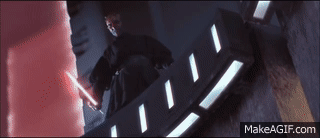
Match on action.

The cutting of various different shots in order to display a seamless continuation of action.
Shot/Reverse Shot
The camera alternates between subjects conversing (not breaking the 180 degree rule).
Reaction Shot
A shot to show a subjects non-verbal reaction to the previous scene (no dialogue)
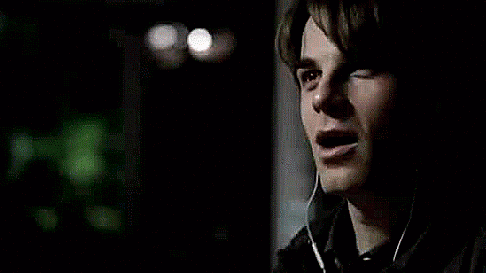
30-degree rule
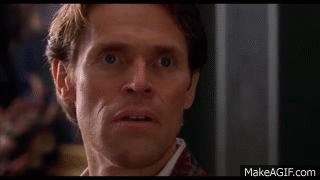
Establishing Shot
A shot taken from an extreme distance always occurring at the start of the scene.
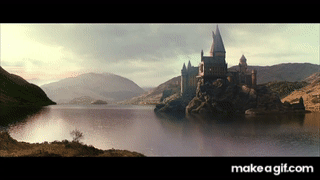
suggests that there should be less than 30 degrees of movement between two consecutive camera shots to aid in continuity.

Jump Cut
180-degree rule

Keeping shots of characters to one side (of the 180 degree 'line') also maintains continuity by keeping a sequence of shots within the half circle in front of the camera.
Is an edit to a single, sequential shot that makes the action appear to leap forward in time. also it must break a continuous shot into two parts.

Graphic Match
Links two different scenes together through the use of aesthetically similar elements like shapes, colours, or patterns.
Freeze Frame
a single picture from a film, or the device that allows you to stop a film at a particular point and look at a single picture.
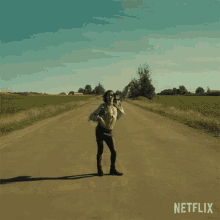
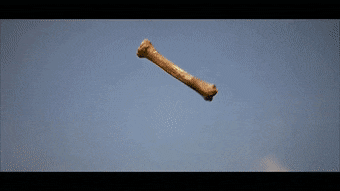
Slow Motion
Is an effect in films where time appears to be slowed down. Which creates a dramatic effect for the audience as the character has slowed down changed speed/pace.

Split Screen
The technique in making movies and television programs in which two different pieces of film are shown at the same time. To show cause and effect or illustrate how one thing relates to another.
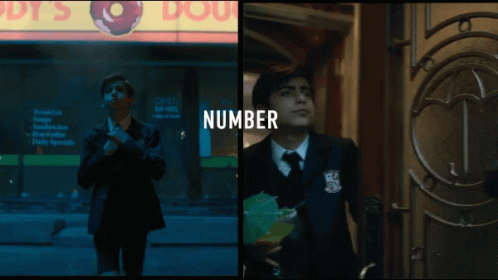
Flashback/ Flash Forward
A flash-forward takes a narrative forward in time, a flashback goes back in time, often to before the narrative began. This technique helps to flesh out a dramatic moment or create the beginning of a story.
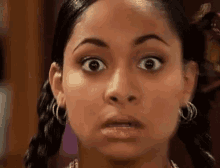

Narrative
Enigma Codes

Unknown elements that need solving(Barthes).
Non-linear

Linear
Chronological order of events (Todorov).
Order of events jump around in terms of time-Flashbacks.
Multi-strand Narratives
Serial narrative
Each episode comprises of self-contained narrative.
Flexi-Narrative
Narrative contains different arcs.
Series Narrative
Each episode comprises of self-contained narrative.
Mixture of series and serial, closure of one story arc within an episode (series) but with other, ongoing story arcs (serial).
Episodic Drama
Unrestricted Narrative
The viewer is privy to certain knowledge or info that is denied to characters within the text (narrative Voyeurism)
Involves different characters and locations, covers a lengthy period of time and includes sub plots in addition to main story.
Restricted Narrative
The amount of info the audience are given is limited as the viewers only known as much as the characters(diegetic).

Purposes
Manipulating the sense of time (linear/non-linear narratives):
Linear narratives live up to their name, meaning you could draw a straight line from the beginning to the end of a story. These narratives start the story at the beginning and tell consecutive events until the finale. In contrast, nonlinear narratives might skip around to different points in time.
Controlling the perception of space to create a logical and believable space between characters/objects not sharing the same shot/angle:
A split screen allows multiple shots to be projected onto the same screen. Just like rear projection, a split screen is something that now looks (and is) relatively simple to make, but it was a bit more complicated before studios could rely on digital editing.
Controlling the rhythm and pace to control the flow of production.
Match on action
Match on action- helps ensure there is seamless flow in action.
Jump cut-shows the passing of time e.g actor waiting in one location (same angle same shot)
Creating a narrative through motivation (motivated editing):
A motivated edit or motivated cut as it is also known, is when the scene cuts to another scene or object that was not in the previous frame. This is done in a discreet manner so as not to come off as jarring to the audience or break the illusion of continuity.
Creating a sense of drama through the withholding of information:
The use of restricted narration in film piques the curiosity of the audience and may create a sense of suspense. This type of narration is frequently used in the creation of films that are thrillers or suspense style films such as horror movies.
Embracing continuity between different shots/angles:
The 180 rule is a filmmaking technique that helps the audience keep track of where your characters are in a scene. When you have two people or two groups facing each other in the same shot, you have to establish a 180-degree angle, or a straight line, between them.
The 30-degree rule is a basic film editing guideline that states the camera should move at least 30 degrees relative to the subject between successive shots of the same subject.
Engaging the viewer through suspense and causing an audience reaction:
Longtakes
Sometimes known as a "oner," a long take is designed to appear to viewers as a single, uninterrupted take. It's a pretty rare trick in films, mainly because it's hard to get right—but when it is done, it can really knock a project up a notch.
From meaning by juxtaposing elements within editing and creating a sense of personal connection with a character.
To form a meaning by juxtaposing elements within editing and creating a sense of personal connection. graphic match/ match cuts-connects two different scenes.

LAA:CORE ASSESEMENT
A QUIET PLACE
In John Krasinski's A Quiet Place a score has been composed in this trailer to create a dramatic effect and to build up on suspense to heighten there emotions , creating a aural mood for each scene to scare its viewers with accompanying music to frighten them on what is to come.
A Close up shot at 0.54 secs in A Quiet Place uses a Steadicam as the camera is tracks rapidly on the bridge following the character proving that this film is used by a single camera. This camera technique creates a sense of realism and a sense of worry which creates a unsettling effect for the viewers which is known for horror and thriller genres that create a anxious feeling . To maintain everything in focus, the film director would have used a aperture of 5.6 to have a clear visual of the subject which exposes the subject to not have a darker background.
A high low angle has been applied at 0.19 secs by having the shot taken above looking down to the point of interest, to establish a scene and present the scale of things through a different aspect angle or point of things by showing the family at a table coming together through a difficult time.


A quiet place by John krasinki's the dominant editing technique is a non-continuity trailer, which was edited to disrupt the impression of time and space by placing it into this order for non -continuity purposes.
Silence has a profound role in A Quiet Place which develops the emotional tone of the film, and is a great tool for captivating the viewers minds making them race to fill in the blanks of what it is they aren't actually hearing anything within the text this contrasts to the use of Diegetic Sound . This creates a creepy atmosphere which creates a build up on tension and suspense as the audience have to be more alert as they can not hear anything.
A editing technique is being shown here at 0.50 secs into the trailer was a reaction shot this was used to show an emotional response to the immediate proceeding action in this case in the trailer it was used for the characters to watch their son die right in front of them the effect of this was to show the cut away from the main scene in order to show the reaction of a character to it therefore creating a uneasy feeling and a tense effect for the viewers. Prolonging a ISO of 400.
At 1.07 secs into the trailer a transition known as fade to black has been used to ease viewers into a new imagery, rather than using a sudden cut from scene to scene each time. In horror films, these shots usually display different points of fear from the characters.


Throughout the trailer of A Quiet Place, low key lighting is often used in thrillers and horrors because of the sense of mystery and creates a dramatic mood the lighting creates for the viewers which creates an eerie effect and builds suspense and anxiousness. further on in the trailer we see a continuous amount of straight cuts being performed for example at 1.22 secs it was used to transition from one shot to another with no effects.
A cutaway technique was used to establish the change in focus by changing to the location from inside to outside (1.32) to establish the scenes surrounding and what is surrounding the character.
A Big Close up is being revealed to the viewers at 0.56 secs by having the camera zoom in on subjects facial expressions from eyes to mouth to try zoom into focus on how the character is feeling. Also preserving on having a clear aperture of 8.

Another transition was used to etstablish a change of scene with a stylised technique with it.
For example A straight cut was shown in this trailer to show a change of scenes.

A POV (point of view) was placed at 0.52 secs to give the viewers a view from the character's perspective by positioning the camera right where the character's eyes would be. These create a better understanding for the audience to connect with the character and show their thoughts and how they view their lives and seeing the character from their point of view trying to prevent the life of their son and being to late to save him . which creates a distraught feeling for the viewers and having a sense of empathy towards the character on how they must be feeling.
Also the 30 degree rule was used in the following scene .we can see when the character turns round to look at his son, it creates a sense of realism this is seen since the camera is alternating/moving with the character's movement (while he turns his neck the subject follows it slowly the camera is moving while the character zooms into the subjects facial expressions creating a dramatic effect for the viewers.


Wizkid Bad To Me
In the Music video Bad To Me, directed by P2J, Wizkid prepares to go live on a talk show while his secret love, the showrunner, makes things happen behind the scenes. As the song unfolds while maintain control of rhythm and pace to control flow of production behind the scenes, they trade glances at each other and eventually end up together at a party behind a pool hall.
Additionally a reaction shot was placed at 1.17 seconds shows the characters reaction to something that occurred in the previous shot , implying that the character on set was shocked about what happened previously this suggests the idea of creating a sense of drama through the withholding of information that us the viewers can see through their NVC.

Moreover, at 1.20 seconds into the music video match on action technique is a transition that cuts from one shot to a closer shot in order to emphasize the action which links to the use of continuity editing since the music video bad to me is a continuity music video the purpose of it is giving the viewers a story in this case its a love story.
Then at 1.12 secs a straight cut was used it is one of the most used techniques in this music video purpose of getting to the next shot in the same scene. As well as this at 2.10 secs to 2.12 secs a shot reveres shot was put into motion to show one of the characters looking at one another from different angle to show they are both looking at each this suggest it was used to show how the characters cant keep their eyes off of each showing the idea of love and first sight making it clear to the audience they love each other. also connotes to the idea of embracing continuity between different shots and angles.

At 0.16 secs into Wizkid's music video a split screen was placed to emphasize the controlling perception of space to create a logical and believable space between characters/ objects not sharing the same shot/angle. In addition it enables the viewers to view multiple shots at the same shots at once. Allowing the artist and subjects to appear up at multiple times in a scene.
Furthermore at 1.37 secs an eyeline match was used in this music video to inform the viewer to what the character sees which creates a euphoric effect for the viewers to see someone they idolised find happiness. which creates a positive effect for the characters on screen and the viewers watching. and makes them what to join in and celebrate.
In addition direct address was used at the beginning of the music video when the talk show representor was talking to the audience to get the viewers to engage with their idol Wizkid taking the stage and making his audience cheer and move along with him. It makes the song even more infectious than it already is , so the representor is making the audience believe they are there at the talk show and are up at close with their idol and he the artist with his fan this creates a positive and emotional effect for the viewers.
also on the cover of the music video we can see a longshot of the subject which helps centre the audience in the scenes they're about to witness.

At this point of time in the video we can see the use of a medium close up being portrayed in the following music video the purpose of this shot is that it puts the audience at just the right distance from the subjects' faces. It's almost like he's talking directly to the audience but the camera is being positioned below him making him close to audience and the viewers.
In the following image on the left id measured of a ISO of 200 to show the sensitivity levels that the higher the grain the more noise created in the scene.
At 0.17s into the music video the subject (wizkid) through his nvc we can see that he look quite serious but on the other hand looks and the way his hand shows in this position could me tells me how intimidating he is. moreover his costume communicates the details of the characters personality visible to the audience they effect how we see the character and how they see themselves.

The setting tells us how the music video was based in a retro type time we can see this by the set talk shows don't look like that these days in 21 century and the tv at the beginning of the music video it was small and wooden very old fashioned setting shows how the artist love how tv shows were made back in the day showing how they love it so much and hope the audience do.
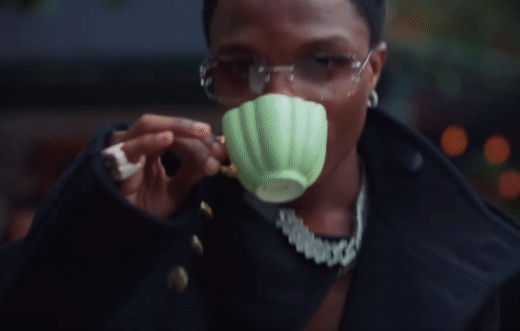
A editing technique that could of been used a slide to signify what was is coming on when introducing the subject that is being introduced to the audience.
At the end of the music video at 3.05 secs, two girls are seen reading a magazine with Wizkid’s ‘Bad To Me’ artwork song cover then the angle shifts into a change of focus instead of focusing on the two girls it zooms into a close up of the artist to show the artist drinking a cup of tea by the sidewalk.

THE VAMPIRE DIARIES
In The vampire Diaries by Julie Plec's trailer is designed order of continuity editing. where a score has slowly built up in the trailer to heighten the idea of suspense and tension in the following trailer.
Firstly the trailer starts off in the trailer with simple straight cuts that later fortifies to quick cuts this suggests that time was steady but as the music becomes greater so did the pace of the trailer. Therefore controlling the rhythm and pace to control the flow of production.
Consistently throughout the trailer elliptical editing is used to compress the length of the show scene to develop the story in as little time as possible creating the effect that time has over lapsed.
In the promo as the music intensifies the more intense it gets and introduces the use of fast paced quick cuts picking up pace with the music.
At 1.55 secs a voiceover was proposed to help keep everything cohesive, this connotes to how the trailer is of a whole season which has been edited to minimise the amount shown so has put the footage of scenes into a smaller version, so the voiceover artist in this trailer is speaking from her point of view to help guide the viewers through what is happening to the characters and herself. With this in mind the majority of sound is heard by the viewers is non-diegetic as the sound of the action in the vampire diaries ,this effect has been put into motion to pull the viewers attention to what is happening but as what I mentioned before to pay attention to the voiceovers as well.
On one hand a fade to black technique was used at 0.22 editing the silence to close off light to the camera, this suggests it was used for a dramatic effect. On the other later on into the trailer sudden dissolve techniques have been put in place at 1.03 secs which has been used continuously in the trailer this was used to brighten the scene using high key lighting in addition this was seen to be a wash it is shown when the entire frame of a shot becomes enveloped in colour. also seen at 1.02 seconds a dissolve technique.


At 1.25 seconds a Eyeline match was used to establish a shot to cut the person that a character was looking at the previous scene. in addition to next scene at 1.32 seconds a reaction shot to the previous scene to show the characters sudden shock of events taken place in the following scene which ultimately builds up a sense of worry for the character for the viewers.

In the following 0.18 seconds of the trailer the 30 degree rule was shown between two characters this has be reinforced to change the perspective of the two characters. which makes the shots different enough to avoid a jump cut which could confuse the viewers. in condition to this this also zoomed in slowly into a close up to create a dramatic effect.
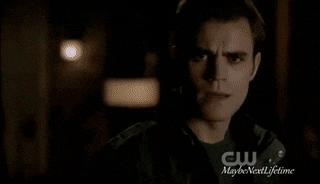
As well as this a over the shoulder shot was put in place at 0.24 seconds into the trailer to show two characters interacting with each other but allowing the viewers see both their faces and facial expressions from different points of interest.
Moreover at 1.17 seconds a slow motion technique (effect) of object in this case a feather that was used in the scene to show the element of that time has gone slower just looking at the feather floating swiftly but slowly in the air and also manipulating the sense of time to admire the beauty around them.
Furthermore a cutaway technique was used between the following 1.38 secs to 1.39 secs which showed a cut of scene to a location (forest) to show the surroundings of the car and enclose specifically where they was to acknowledge the audience for the sudden cut to a new location.


In this shot it has a shutter speed of 1/8.
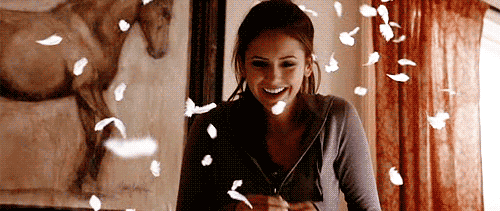
A match on action cut transition was used at 0.41 that cut from one shot to a closer shot in order to emphasise the action and used to generate a seamless float in editing by zooming into shots slowly (softly) and fluidly.

Through their NVC at 0.45 secs we can see how the subject eyes are close to the camera suggesting the sense of fear and worry the subject looks fearful which creates a sense of mystery for the viewers wondering what he could be hiding. also at the following 1.36 secs we can see through costumes what type of person this character he wears all black plays with his hair a lot we can infer that he cares about his appearance and is rebellious through the use of NVC by the way they act this can be seen by us the viewers and by the audience he is represented as a bad boy ,doesn't listen to anyone and doesn't play by the rules.


Continuity Experiment

continuity sequence
Two people on a date.



Continuity sequence
My development portfolio the purpose of my edited sequence was to make a video of continuity to have a flow of seamless editing. By editing I have edited the sequence into a shorter scene which can be edited more easily. What I have filmed is two people on a date in an African restaurant showcasing them walking in into the restaurant while being guided into the restaurant by the waiter who slowly takes them to the table and drops off the menu while the couple engage in conversation while shifting to a different location of the restaurant while the bartender offers them something to drink while shifting to show others at the bar. The following continuity techniques that I have used was a cutaway to establish a cut from the restaurant to the bar along with using a shot reverse shot of both subjects looking back at one another from different angles to show that they are both looking at each other at the same time. And using a 30-degree rule to show them still engaging in conversation while showing one another in conversation . I intended on the audience to see how I used the reverse shot to show the how the couple like from each other's perspectives on the date telling the audience that they do intend love each other from the shots of the camera. From what I have seen and produced I know that I could of improved the focus on the camera in my shots as they were not in focus and not being able to do a 180 degree shot but instead doing a 30 degree rule.and from what I have done well is kept the video in continuity.
non continuity video trailer

Non-continuity sequence.



My non continuity video sequence.
Non-continuity sequence.
My development portfolio the purpose of my edited sequence was to make a video of a non continuity sequence of my choice. Which was a promotional advert so I choose to do an advert promoting my energy drink which was filmed in a restaurant which shows two people at a table having a drink and talking about how great this product is . The following non-continuity techniques that I have used in my promotional advert I captured the camera shots with first a close up shot to show the product as this creates a good impression as it pushes the audience to the and over the shoulder shot showing the subject drinking, a high low angle showing the subjects looking up with amusement making the audience react in good way that the drink is good and makes them intrigued at how lovely the drink is , slow motion to showing them picking up the energy drink slowly mid shot from the waist of subject having a sip of the drink but showing that after you have the drink you gain so much energy ,a two shot to show both subjects drinking at the exact same time at eye level ,using a point of view shot to show her drinking the energy drink I did this be a and showing the audience a close of the product and what it looks like, a medium long shot seeing the subject standing in front of more energy drinks to showcase the product see the product in the way that makes you want to grab one, medium close up of the product and lastly having a wide angle shot to show the subject promoting the product conversing in conversation this choice was to show them from another perspective this suggest how the drink is good that you can talk about it and using direct address talking to the audience to buy now.i made this decision as the audience know that you can enjoy this drink and engage in the conversation From what I produced based on the camera shots I captured. I could of worked better on my camera skills the result shows some shots out of focus and positioning of shots unstable as I did some of the shots horizontal instead of landscape causing me to reframe some of my shots and going back to the location to capture some background shots so ended up doing a split screen I did this beacuse I couldn't shoot the shot again as the actors were unavailable so of my medium long shot to show the restaurant behind like a background screen and used a split screen for the following shots for a mid shot and long shot that I shot horizontally so using a split screen as alternative option and in hindsight I know for next time not to make this mistake again with having the camera downwards .my reasoning for this was reflected in my work.

Learning Aim C
create an original trailer to promote a horror film belonging to the horror genre.
The slasher genre is probably the most well-known subgenre in horror. Typically, these films feature a human-like killer (sometimes with supernatural powers) that hunts down a group of people, usually teenagers.
Horror genre: slasher
The slasher film (sometimes referred to as body count films and dead teenager movies) is a sub-genre of horror film typically involving a psychopathic killer (sometimes wearing a mask) who stalks and graphically murders a series of adolescent victims in a typically random and in an unprovoked fashion.
Narrative Breakdown
shooting script
script
video log sheet
storyboard







